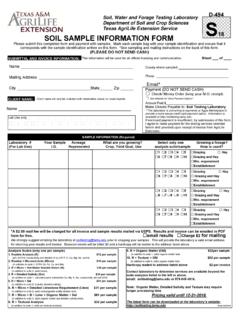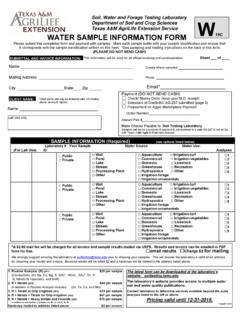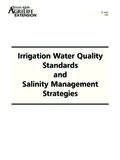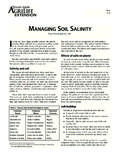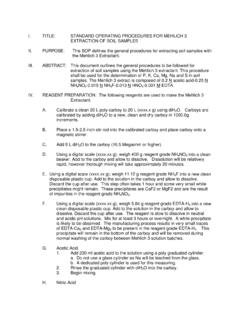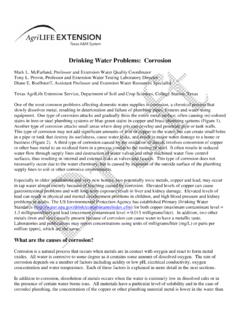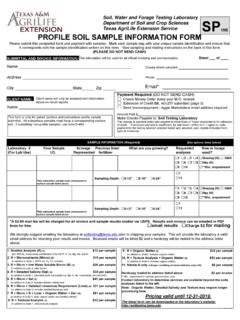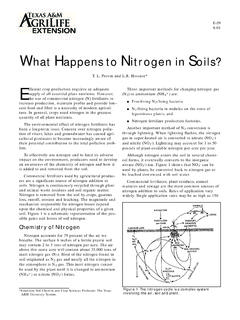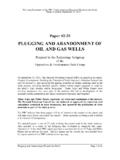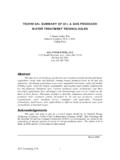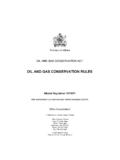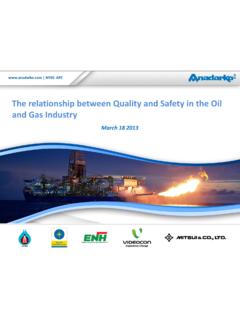Transcription of Land Application of Drilling Fluids - Texas A&M …
1 1 SCS-2009-08 Mark L. McFarland, Professor and Extension State Water Quality Specialist Sam E. Feagley, Professor and Extension State Environmental Specialist Tony L. Provin, Associate Professor and Extension Laboratory Director Texas AgriLife Extension Service Petroleum and natural gas are major sources of revenue in Texas . However, disturbance caused by construction of Drilling locations, oilfield roads, and installation of pipelines can re-sult in reduced crop production, increased susceptibility of the damaged sites to erosion, and in-creases in noxious and poisonous plant densities.
2 In addition, on-site disposal of Drilling Fluids used in the Drilling process can create problems if not managed properly. Drilling Fluids have been and currently are land applied in many parts of Texas . In some areas, the use of clayey Drilling Fluids on sandy soils has improved water holding capacity and plant growth. However, in many areas of the state, improper rates of Application of high salt Drilling Fluids have resulted in the death of plants and severely damaged soils that have failed to recover even after many decades (Photo 1).
3 BACKGROUND Photo 1. Denuded oil well reserve pit in west Texas with high soil salt concentrations. land Application of Drilling Fluids : Landowner Considerations 2 Photo 2. Oil well reserve pit containing Drilling Fluids . The Environmental Protection Agency (EPA) classifies oil and gas Drilling Fluids as special wastes which are exempted from amendments to the Resource Conservation and Recovery Act (RCRA) issued by Con-gress in 1980. As a result, regulations re-garding the handling and disposal of oil-field generated wastes vary from state to state.
4 The Railroad Commission of Texas (RRC) is authorized to regulate disposal of Drilling flu-ids under Title 16 (Economic Regulation), Part 1 (Railroad Commission of Texas ), Chapter 3 (Oil and Gas Division) of the Texas Administrative Code. Under State-wide Rule 8, adopted by the Railroad Com-mission, authorized disposal procedures in-clude landfarming and burial of certain drill-ing wastes, including Drilling Fluids . Drilling Fluids , also called Drilling muds, typically consist of about a 5% slurry of ben-tonite clay in a base fluid of water, diesel, or mineral oil, an organic material such as lig-nite or lignosulfonate to stabilize the slurry, and a density increasing material, usually barite (BaSO4), to help float out rock parti-cles.
5 However, the quantity and chemical composition of a particular Drilling fluid will vary with conditions in the hole, such as depth and type of formation. These Fluids remove cuttings from the hole, cool the drill bit, and seal off porous geologic strata. The fluid is periodically pumped into a reserve pit (constructed earthen pit) circulated to allow cuttings to settle, and then reused (Photo 2). When Drilling is completed, much or all of the fluid is disposed of in the pit, allowed to dry, and then mixed with soil from the pit berms or simply covered.
6 In other situations, Drilling Fluids may be disposed of by removal and transport to an approved landfill, or by land Application . Landfarming or land Application is a process whereby Drilling Fluids are spread on the land surface. The rate of Application depends on the characteristics of the soil and the chemical composition of the Drilling fluid . land Application is often preferred to reduce the costs of disposal, and may be con-ducted either on-site (where the Drilling occurred) or at an off-site location.
7 This process also is used to treat and/or dilute potentially harmful constituents in the Drilling fluid , when present. These con-stituents may include petroleum hydrocarbons, salts and/or heavy metals. 3 Petroleum hydrocarbons including oil and grease can be toxic to plants in modest concentrations either due to direct contact or through adverse effects on soil properties. When oil is spilled on growing plants, low molecular weight compounds, for example fuel oil, act as a solvent on the lipid membranes of tender plant parts.
8 Total soil hydrocarbon concentrations greater than 1% have been found to be toxic to most plant species and this level is normally considered the threshold between non-contamination and contamination. Soil oxygen levels are reduced because diffusion of oxygen through the oil and/or grease layer is poor and because microbes use the available oxy-gen as they breakdown the oil. As a result, the soil can become anaerobic (low oxygen), which is limiting to plant growth. In addition, plant available nutrients (particularly nitrogen and phospho-rus) are rapidly used by these microbes in the process of degrading the oil and can become defi-cient for plant growth.
9 Finally, and commonly the most damaging to plant growth, soil particles coated with oil can become hydrophobic which reduces water infiltration, drainage and storage in the soil, and its availability to plants. Salts in Drilling Fluids can affect both plants and the soil. The salts present in Drilling Fluids can come from 1) the materials used to formulate the Drilling Fluids , and/or 2) poor quality groundwa-ter or salt containing geologic formations that are contacted during Drilling . High levels of soluble salts decrease water availability to plants, basically creating a drought-like stress which can cause plants to wilt and potentially die.
10 A soil is typically considered salt-affected or saline when the electrical conductivity of the saturated paste extract exceeds 4 millimhos per centimeter (mmhos/cm). However, sensitive plants may be affected by even lower soil salt levels. In loamy to clayey soils and under drying conditions, salts will often wick to the soil surface and accumulate, some-times producing a white appearance (Photo 3). Several of the salt elements like sodium and chlo-ride can be toxic to plants in high concentrations. Another element, boron, can be toxic to some plants even at relatively low concentrations (< l part per million, ppm) in the soil.
